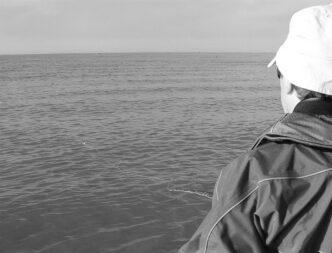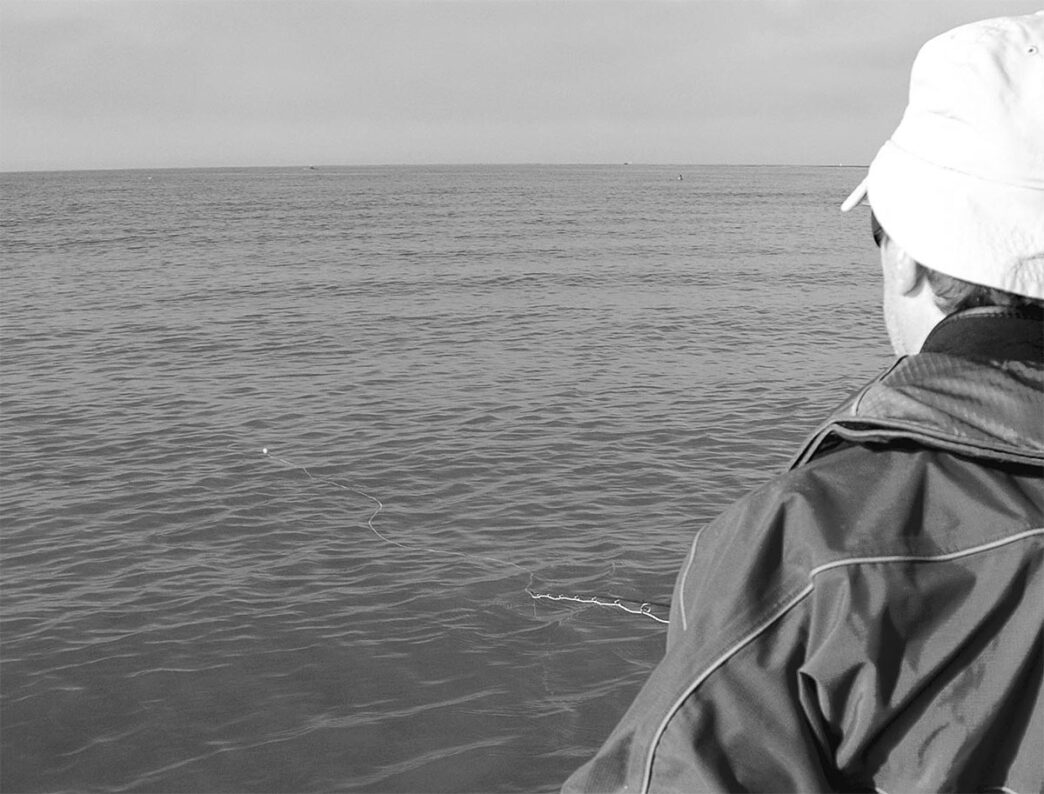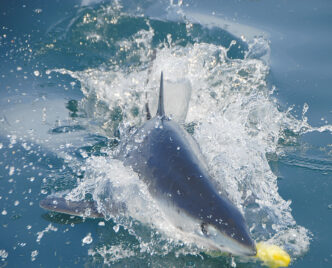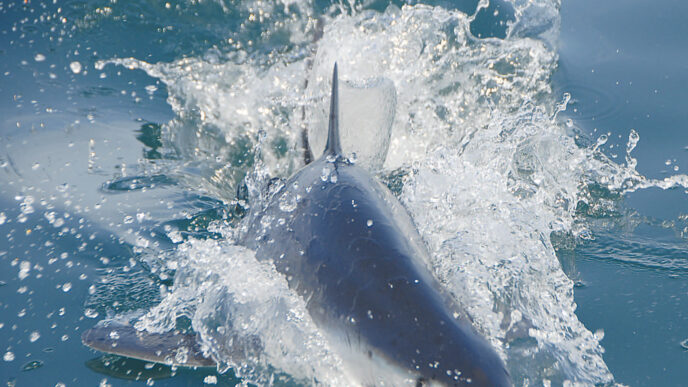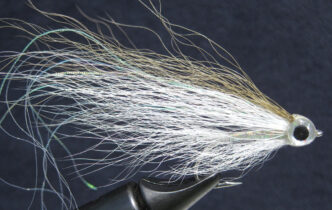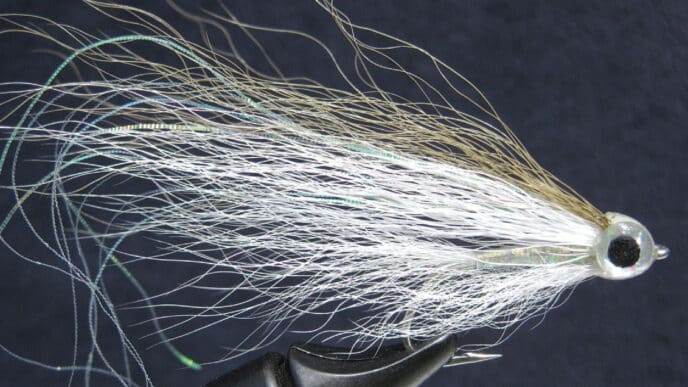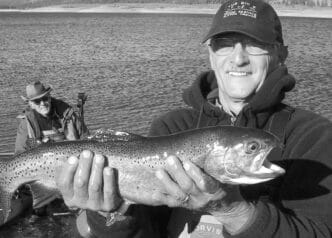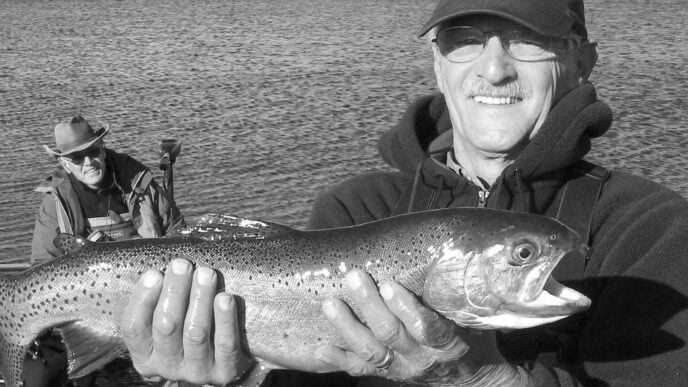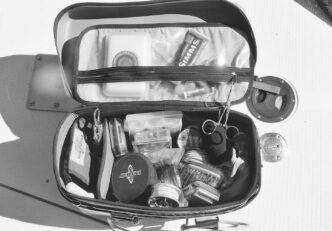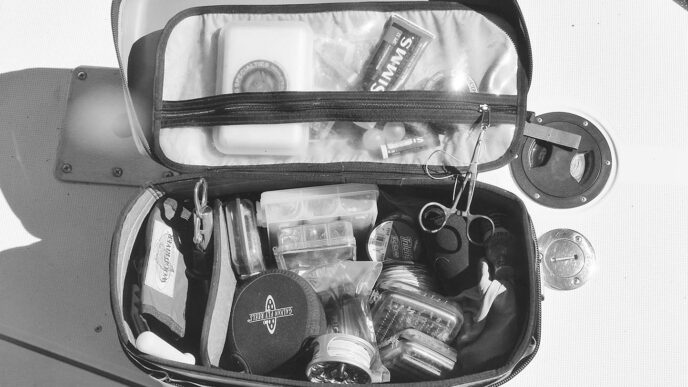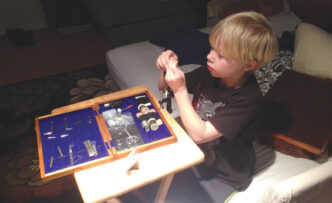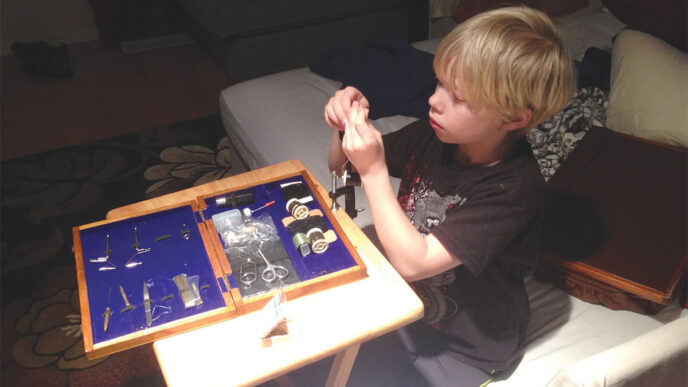I often talk to fly anglers who fish only rivers or creeks. Many of these folks live in coastal communities and have made a conscious decision to settle there because they love the ocean. When I ask them why they don’t fish the surf, typically, I hear the following: “I don’t have the equipment and have no idea how to fish the surf.”To be sure, the edge of the Pacific can be intimidating, but in reality, it can be fished much like a stream. As for equipment, trout gear is actually quite suitable. You just have to pick the right time and place.
Standard gear for fishing much of the California surf zone is a 7-weight or 8-weight rod and matching high-density integrated shooting head. This setup can handle the heavy push of spring tides and waves up to five feet, which is about as much as anyone can handle with any degree of safety. Conditions such as these are not uncommon in the winter and early spring. However, by May or June, the ocean typically settles down, and for the next three or four months, the waves are often three feet or less. While you can continue fishing a gentle surf with your heavier rods, lighter gear is often a more sporting choice. This is when your trout stick can do double duty.
Most California fly anglers fish for trout in the state’s creeks, rivers, and lakes using a 5-weight or 6-weight rod and matching line. This gear easily handles fish up to five pounds and can cast size 4 Woolly Bugger and hopper patterns 30 to 50 feet with little fuss or drama. This just happens to be the perfect recipe for catching surfperch, too. Pretty much every sandy beach in California is home to surfperch, which run from half a pound to three pounds and are perfectly adapted to feeding in water that is one to six feet deep. Suitable water is often found just a few yards from dry sand, which means you seldom need to make long casts. Here are some ways you can “trout fish” for perch.
Fishing When the Surfers Go Home
Whenever the surf drops to two feet or less and the shortboard surfers complain about “ankle-biter” waves, I throw a 5-weight rod and floating line into the back of my car and head to one of the local beaches with a smile on my face. I try to get to the water before sunup, or as close to that time as my body and brain will allow. In the summer months, that can mean being on the water by 6:00 A.M. I find it is best to get all my fishing gear and clothing ready the night before. That way, I don’t have to think too hard about anything more than getting up and on the road. Needless to say, caffeine can help a lot.
The reason for the early start is twofold. First and foremost, most surf zone fish feed aggressively in the shallows during low-light conditions. Once the sun starts shining hard, the fish depart for deeper waters. The other reason to get to the beach early is the lack of crowds. Most beachgoers haven’t a clue you are throwing a wickedly sharp hook back up the beach when you cast. They will unwittingly pass perilously close behind you. Some will even stop to gawk and ask questions. You avoid all of these problems by getting to the beach before the crowds descend.
Coastal fog, which is pretty much guaranteed most summer mornings, will reduce the crowds and keep the fish in close. I love foggy days.
I suggest you start fly fishing the surf with a technique that is familiar to most trout anglers — fishing with an indicator. The setup is simplicity itself. On the end of your standard floating fly line, attach 6 to 8 feet of mono. Anything from 3X to 20-pound test is fine. There’s no need for fancy leaders or fine tippets with this game. For the indicator, I am partial to the trapped-air technology of the Thingamabobber, but in reality, any high-floating foam indicator will do just fine. I usually start with the indicator about 4 feet from the fly and adjust from there as the conditions or fish dictate. On the business end, tie on a size 4 beadhead fly such as a brightly colored Woolly Bugger or a Clouser. Bright orange, red, or green weighted shad flies are perfect, too. Leave your Pheasant Tail Nymphs at home.
Fishing Troughs
Scientists might describe a longshore trough as a long, linear depression aligned parallel to the shoreline. They might also mention that the sands in troughs are modal or bimodal, with a tendency to negative skew. I am sure this helps you visualize how a trough looks, right? If not, perhaps a simpler way to describe a trough is to say it is an area of darker water between the foamy water washing over an offshore bar and the foamy water sloshing around your feet. Water in a trough flows parallel to the beach, so if you see a dark strip of water flowing from right to left (or vice versa), you’ve found a trough. Basically, a trough looks and behaves a lot like a river.
Troughs are typically wider and deeper in the early spring and fade away under wave-deposited sands as the summer progresses. Most are gone by fall. Sweetwater anglers don’t have to learn too many new tricks or recalibrate their fishing brains to be successful when fishing troughs: fish a trough as you would fish a river, and you will catch fish. Depending on the time of year, troughs are typically 3 to 6 feet deep (at high tide), 20 to 40 feet across, and cover 100 to 200 feet from their “headwaters” to the point where they dump into a hole or rip. Most of the time, the water flows from right to left, but this can be reversed if swells are coming from the south. Water flows vigorously through troughs, scouring out a heavily scalloped bottom and eroding the banks. As it does this, it dislodges sand crabs, shrimp, and small shore crabs. Schools of perch hold along the edges of the trough or in the scalloped depressions, waiting to pounce on anything that twitches.
I usually find the best time to fish a trough is as a flooding tide pushes water onto the beach, covering areas that were formerly dry or too shallow for fish to access safely. Exactly when a trough will have sufficient water to turn the bite on is hard to say. However, I try to go fishing when the morning starts with a low tide around 3:00 or 4:00 A.M. That usually means a good current will be pushing through the troughs by 6:00 or 7:00 A.M., giving me several hours of prime fishing before the sun is too high.
The simplest way to fish troughs is with a wet-fly swing. Cast directly across the trough to the “far bank” and allow the indicator to sweep along with the current. Retrieve when your line is directly downstream of you. Don’t be surprised to get takes right against your own bank. If things are a little slow, you can make the fly twitch by giving the line sharp two-to-three-inch plucks. This often wakes the fish up.
If the hydraulics are too strong or the fish are holding deep, your fly may have trouble getting down far enough. Add one or two BB shot to the tippet, and you should be able to make the fly skip along the sand. Sometimes the trough is so close to shore that you can high stick or Czech nymph your fly through the water. This really isn’t complicated fishing. That said, don’t be tempted to wade too close to the edge of the trough. The sand is very unstable, and the water quickly deepens. Stay back at least a rod’s length.
Experiment with indicator depth so the fly works the entire water column. Barred perch usually feed on the bottom, while walleye perch and jacksmelt (which are like turbocharged trout) are usually closer to the surface. Work the water methodically downcurrent, covering every inch with your fly. Fish may be holding in one specific section of the trough or maybe roving up and down its length. Standing in one place lowers your odds of hooking up. Of course, if you find fish, stay on them as long as you can.

Eventually you will get to the end of the trough, where it angles away from the beach and pushes a tongue of water offshore. This is where the trough transitions into a rip, and this corner is often where the “big gals” are found. Heavy currents and added wave exposure can make tracking the indicator in this area a bit challenging, but the hits are usually so hard that it doesn’t really matter. The indicator will get yanked down or dragged across the surface as the fish uses several tons of Pacific Ocean to aid its escape. A really big perch will take you into the backing. Smaller fish will take line, but quickly revert to a dogging fight with shorter runs. This is a spot where striped bass also hang out, so don’t be surprised if something heavy and fast hits the fly and you suddenly feel seriously undergunned.
While a cross-trough cast is the easiest approach, I usually start at the “headwaters” of the tough, where there are typically heavy concentrations of sand crabs.
Standing in a foot or so of water, I create a chum line by shuffling my feet. This flushes sand crabs and shrimp out of the sand. They are dragged struggling and kicking into the current. Perch respond quickly to water containing sand and sand crabs. The water will often be shallow, so make sure your indicator isn’t set too deep. A couple of feet should do the job. Simply pitch the rig into the water and feed line as it moves downcurrent. Strike whenever the indicator twitches, jerks, or goes under. The headwaters are usually where walleye perch are found. If you are interested in worldwide fame, the record books are open for anyone landing a walleye perch over one pound. Don’t assume this diminutive size makes them a joke, though. Ounce for ounce, these fish are significantly stronger than trout. If they grew to 100 pounds they’d even shame tarpon. On trout gear, they are a total blast.
Fishing Drop-Offs
Just as when fishing a river or stream, you are looking for places where the fish can avoid the full push of the current, but be close enough to intercept food caught in the flow. A prime spot in a river is where a shallow tailout drops into a deeper pool. The same hydraulics are happening in the surf where a flat, sandy area, covered by no more than a foot or so of water, transitions into a deeper hole. If you arrive at low tide, you can often see these features in the uncovered sands. Memorize the spots and return when they are flooded by a rising tide. If you don’t get to the water at low tide, you can spot these features relatively easily — simply look for foam-covered water that blends into darker-colored water. Set your indicator about three feet from the fly. Cast a few feet up onto the flat area and let the current drag your fly into the drop-off. You will know when you are in the right spot, because your fly line slows down as it hits the transition point between the flat and the hole. This is the hot zone, where you will get jolting grabs from perch and smelt.
Sinking Lines
While the floating line and indicator setup will put you into fish, things can become difficult when the waves get choppy, which often happens as the fog starts to burn off. When this occurs, you can either pack it in or swap lines. I don’t know about you, but I hate to stop fishing if the fish are still biting. Perhaps the most versatile choice for this situation is a medium sink rate or intermediate line. Many trout fishers will already own such a line, and if not, a perfectly serviceable line can be purchased for under $40. There’s really no need to plonk down $75-plus on a top-quality line for this sort of fishing. These lines will sink down below the surface, providing a more direct connection to the fly, which reduces slack and provides a more effective retrieve. You fish the same flies and the same sections of water with this setup, but without the indicator. It’s really no more complicated than that.
Stripping Baskets
While you can fish out to 50 feet without too much trouble, fishing farther than this in the surf can be a bit of a pain. This is when a stripping basket can make things a lot simpler. There are plenty of suitable baskets on the market. The Hipshooter and the Orvis basket are two very popular and effective setups. Folks who are good with their hands can always make their own. Fabricating a stripping basket is pretty simple. You can find plenty of videos and instructions online to help get you started.
So next time you are yearning to fish and considering loading the car up for a multi-hour drive to one of the state’s rivers or lakes, give the surf another thought. The scenery is stunning, the fishing is fun, and who knows — you may just decide to make a local beach your home water. I did exactly that 25 years ago and have never regretted it.



